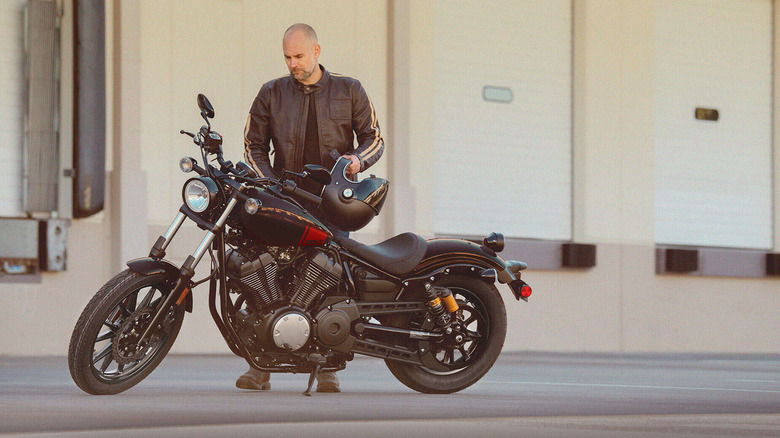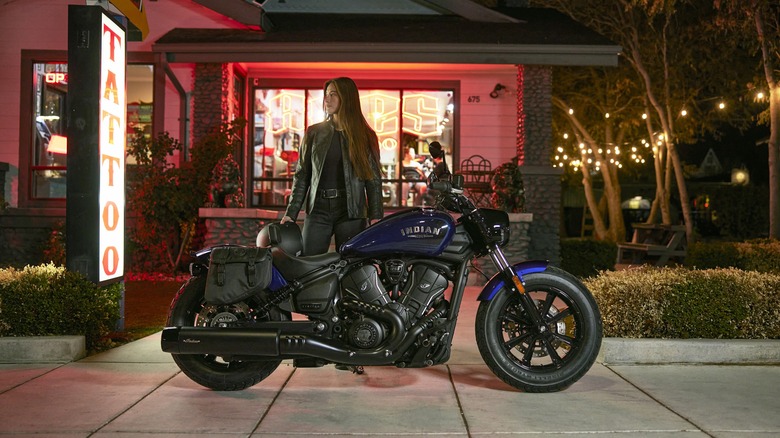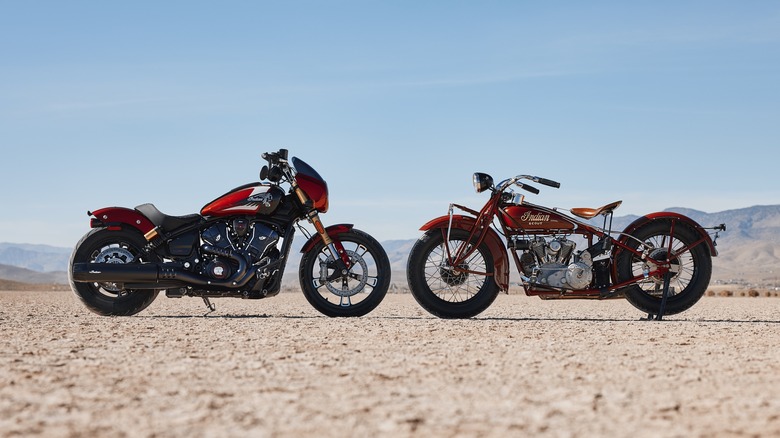Yamaha Bolt Vs. Indian Scout: Which Is Quicker?
In terms of its reputation, the Indian Scout is a hard bike to beat. Back in 1967, at the Bonneville Salt Flats, Burt Munro set an official land speed record in a hand-crafted aerodynamic bullet he built around a 1920 Indian Scout, a record that still stands today. Burt's 184 mph odyssey played out again in 2005, when Anthony Hopkins starred as the 68-year-old New Zealander in the box office hit "The World's Fastest Indian", cementing Burt's fame while reaffirming the Scout's notoriety as one very fast ride.
Fame and legacy aside, just how quick is the modern-day Indian? How would a 2025 Scout fare when matched up against its Japanese rival, the similarly styled Yamaha Bolt? If you want the quick answer, you're in luck, because both middleweights tip the scales at 542 pounds. So unless it is geared like a tractor, the bike with more torque and more power is going to take that prize.
In the Yamaha Bolt corner, we have 53 horsepower and 59 ft-lb of torque, while in the other, the Indian Scout packs 105 hp and 82 ft-lb. It's no contest: With nearly twice the power and far more torque, the Scout is the faster bike. It is quicker off the line, and will hold that advantage until hitting its top speed. But as we will see, there is more to this match-up than sheer grunt, because the Bolt can punch well above its weight — with some smooth, low-down moves to boot.
The Indian is quicker once you get the revs up
Both are traditionally styled, midweight, V-twin cruisers, but the Yamaha delivers its peak performance low down in the rev range — just what you want when rumbling along Hollywood Boulevard — with enough reserve power to brush by a car at 60 mph on the highway in top gear. Motofomo reports that the Bolt's 942 cc air-cooled four-valve gets its power to the road early, with peak torque on tap at 3000 rpm, and staying that way until 4500 rpm.
In contrast, the Indian's larger displacement, liquid-cooled 1250 cc SpeedPlus needs to be wound up before it flexes its muscles. Rider Magazine reports that the Scout hits its stride at the noisier end of the gear shift, with peak torque coming on at 6300 rpm — that's twice the frequency of the Bolt's engine note — with full horses kicking in late at 7250 rpm, and continuing in a mad stampede to the factory-limited 8500 rpm redline.
At this stage, flat out in sixth gear, the rider is channeling Burt Munro, gunning the Scout along at its top speed of 120 mph. Meanwhile, the Yamaha Bolt is breaking speed limits, but not speed records with its maximum speed of 105 mph. Whether you're wheeling a Yamaha Bolt or a Bolt R-Spec, the performance is the same, although the R-Spec is the pricier option with its reservoir shocks, anti-locking brakes, and 12-spoke alloy wheels.
Is speed what you want in a cruiser?
Now let's slow down a minute. Is the race track really what the cruiser lifestyle is about? If you're pushing a bobber and saddlebags through the air at over 100 miles per hour, you might want to reflect on your life choices, given there are more comfortable and efficient ways to garner speeding tickets — for example, on a sports bike — without bottoming out your pegs in the twisty bits along the way.
Whether throwing a leg over a Scout or a Bolt, riders will find the seat of their pants close to the asphalt, with the Scout boasting the industry's lowest seat height of 26.5 inches with the Bolt a bump taller at just 27.2 inches. While it goes by different names in different places, in the U.S. the 2025 Bolt R-Spec is a back-to-basics design, a platform much beloved by its fans for its ease of modification, featherweight chassis, and flickable handling.
The 2025 Indian Scout lineup is more comprehensive, with five models: The Bobber, Sport, Super, Classic, and the top of the range, the 101 Scout, which squeezes out six more horses than its stablemates at 111 hp, with more than a passing nod to its 1928 namesake. The present-day range of Scouts start at $12,999, versus the Bolt at $8,999, both including destination, but bear in mind engines over 1000 cc are usually met with higher insurance premiums. Similar alternatives include the Kawasaki Vulcan S, Suzuki Boulevard C50, Royal Enfield Super Meteor 650, and the Harley-Davidson Nightster.


